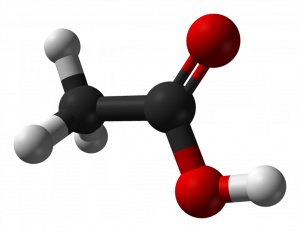7.1 Aldehydes, Ketones, Carboxylic acids, Esters, and Amides
The Carbonyl Group
Double bonds between carbon and oxygen are common in nature. Organic families containing this arrangement of atoms are referred to as ‘carbonyl compounds,’ and the group itself is referred to as a ‘carbonyl group.’ Multiple organic families include this arrangement of atoms, and each has its own distinct characteristics. Included in the larger group of carbonyl compounds are the narrower families: aldehydes, ketones, carboxylic acids, esters, and amides. Others also exist.
The carbonyl group utilizes two of carbon’s four valence shell electrons for bonding, resulting in a trigonal planar arrangement around the carbon. As a result the bond angles between the carbonyl carbon and each of the other atoms it is attached to is 120 degrees. The carbon to oxygen bond is polar, with a partial positive charge at the oxygen. Additionally, that oxygen includes two nonbonding, lone pairs of electrons. This concentration of electron charge at the oxygen results in significant dipole-dipole interactions in samples of most carbonyl compounds.
Some carbonyl compounds may be able to engage in hydrogen bonding interactions as well, but not all do. So the families within this larger group have noticeable differences that relate to this fact.

Exercise 7.1.1

